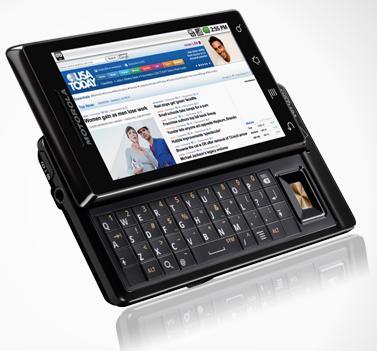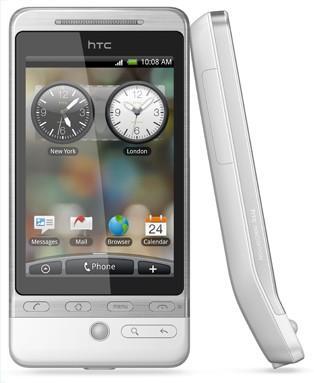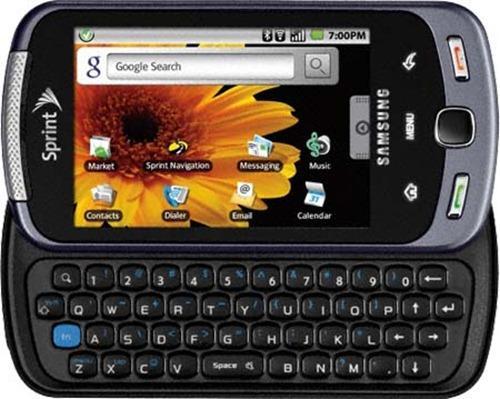Verizon jumped into the Android game with both feet last Friday, selling the much hyped Motorola Droid and its more-than-capable little Sis, the HTC Droid Eris in stores across the nation. With the US' number one wireless carrier now selling phones built around Google's Android OS, the platform is poised for a big uptick in mass consumer adoption. Heck, AT&T might even start carrying a Google phone before too long.
We want to take you on a quick tour of Android from a consumer perspective to help you better know the lay of the land, talk smack about iPhone/WebOS/Windows mobile at your next cocktail party, or even pick up a new smartphone to call your own. Here's a quick rundown of every Android device currently for sale on a US carrier, and a few that are expected in the coming months, led by John Walton, PhoneDog's resident Android Guru and Managing Editor of DroidDog.com, the place to go if you really want to get to know Android.
John Walton, PhoneDog Editor and Founder, DroidDog.com; Noah Kravitz, Editor-in-Chief, PhoneDog; Aaron Baker, News Editor, PhoneDog; Adriana Lee, Lifestyles Editor, PhoneDog
David, Founder, TmoNews.com (for his T-Mobile expertise); John Edgar, Android Geek and Friend of the Dog
NOTE: We've broken this article into two parts for your ease of reading. Part One covers currently available Verizon and Sprint Android phones. Part Two covers available T-Mobile phones and upcoming Android devices already announced or strongly believed to be coming to the US market within the next several months.
NOTE: All prices are given as on contract/after rebate when bought direct from the carrier.

John Walton: Droid looks and feels like a high-end device and may be the poshest Android to date. I prefer to leave the hardware keyboard hidden and avoid that sliding mechanism altogether, but the display makes up for any complaints. Not to mention that this phone comes with the sure-to-be-a-smash Google Navigation and Android 2.0.
Noah Kravitz: My qualms with the lousy, awful, terrible keyboard aside, Droid is sleek, fast, and sports perhaps the best display on any mobile phone ever. It's also the only way to get Android 2.0 and Google Nav, which as John says are both pretty keen. I'd love to see Droid2 as a super thin, touch-only version of the same phone.
Aaron Baker: A 3.7-inch display, Android 2.0, and a great form factor make the Droid my favorite Android device this year. Despite the keyboard and some battery life issues, the design appeals to business professionals (a group that Android needs to begin catering to) and media junkies.
Adriana Lee: Stunning display, yes. I could even see it in full daylight with the sun blasting my eyes. Okay, the keyboard isn't perfect, but as an iPhoner who'sbeen pining for a physical QWERTY, I'd rather have this than none at all. A bit too boxy for my taste (I prefer more rounded corners), but the excellent build quality is evident. And Android 2.0 rocks! Can't wait till all my favorite apps (like Layar) support it.
John Edgar: The metal, glass, display, weight, and feel all scream quality. Android is ready for prime time with version 2.0. I have concerns about app compatibility and how fast apps will come online for use on Droid. App developers have only had the SDK for a few weeks. There was a 4 to 6 week lag in compatibility for some apps with Android 1.5.

JW: The European Hero swept me off my feet with its daring design and the debut of HTC's customized flavor of Android, Sense. Sprint's version may be lacking the retro-geek lines of the GSM version but it has all of the original Hero's grace - and then some - behind the screen. Sprint's Hero is a great introduction to HTC's custom UI, but Sense will be extra impressive on a more powerful phone.
NK: Hero has a leg up on Droid with a Web browser that does iPhone-style pinch-and-zoom, and HTC's custom widgets and apps. Despite Droid Eris' low price tag, Sprint's Hero is still the better value over the long haul of a two-year contract. But Droid Eris looks cooler all done up in black.
AB: While this is a "love or hate" thing, I much prefer the form factor of the Sprint Hero to the Droid Eris. That being said, there will always be a group of people that prefer physical QWERTY keyboards to virtual keyboards, and I am one of those people. Despite the inclusion of a physical QWERTY, HTC's Sense UI along with pinch and zoom capability make this device a winner.
AL: European Hero = serious win. Sprint's version? A little less so for me, re: the form factor. Yes, it has rounded corners, but the flat "buttons" at the bottom don't appeal to me. But I'll take it if it means I get to use Sense. As for Eris, I like the rubberized exterior, so this felt good in the hand. In both cases, I love the rollerball action, but I felt like the onscreen QWERTY keyboards were a little small and spaced close together.
JE: I am a Euro Hero fan. The feel of the white teflon coating on the hardware does so much for the tactile feel of the device. Personal belief is that a bad hard keyboard is better than no hard keyboard at all. I would not purchase Eris, when the Motorola Droid is available, and woudn't be swayed to Sprint's Hero when the European version is available. But that's just me.

JW: Moment is a powerful handset in disguise. The physical design leaves plenty to be desirerd in my book, but if you're looking for a capable, customizable Android with a hardware keyboard, then Moment is worth a look. Just be sure to thoroughly test drive that QWERTY.
NK: Moment's an interesting device that I want to like more than I really do. The AMOLED display is gorgeous, and the combination of a stock Android release and fast processor makes for a smooth ride through apps and Web browsing. But whoever designed the hard QWERTY board should be fired - the keys are okay but the layout makes no sense at all.
AB: I absolutely love the Moment's AMOLED display, fast 800 MHz processor, and roomy QWERTY keyboard. Overall build, not so much. Yes, there's a lot packed under the hood, but the Moment is a bit bulky.
AL: Fast and snappy. If function matters more than looks, then this handset might be up your alley. But for guys, this fattie of a phone isn't the most pocketable (and ladies, don't even think this will fit in your skinny purse). As for the keyboard, staggered keys and dedicated number rows are generally good, but not in this case. The "z" isn't where you expect it to be.
JE: This would be the phone I would choose from the current Sprint Android offerings based on sheer horsepower alone. That combined with a physical keyboard, albeit a quirky one, seals the deal for me. AMOLED is a huge plus. Not my ideal phone though, making it a device that would not get me me to sign on the dotted line with Sprint.
Continue on to Part Two: T-Mobile and upcoming Android phones.